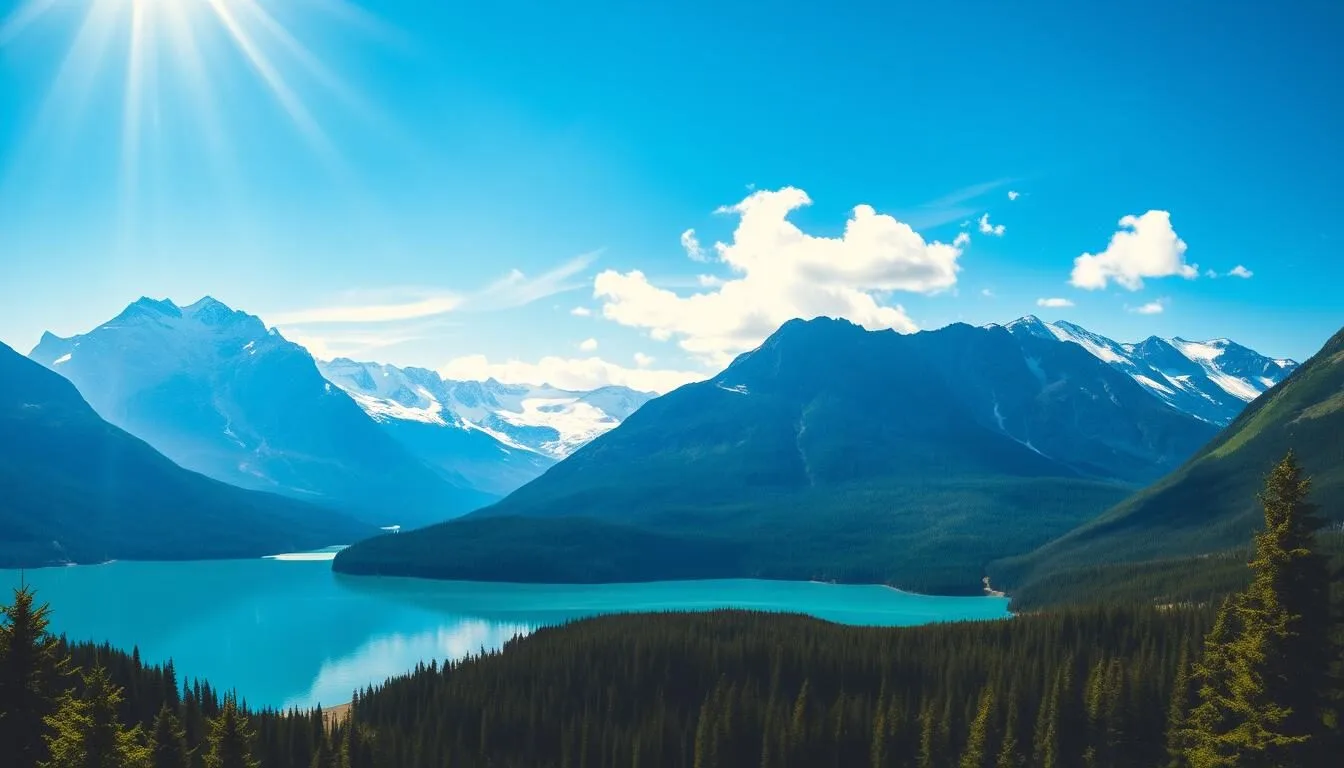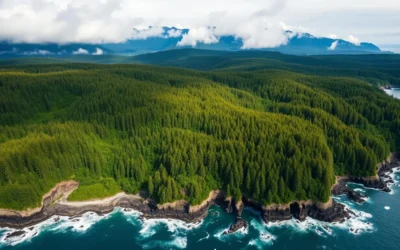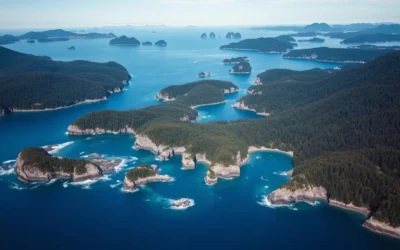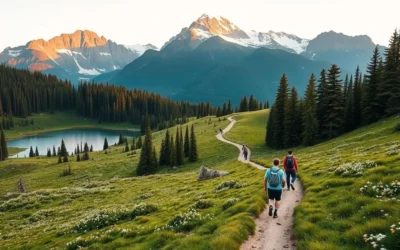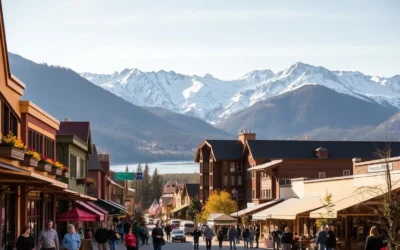✓ Accommodations✓ Flights✓ Rental Cars
Nestled in the Canadian Rockies, a hidden gem awaits. Unlike its famous Montana counterpart, this park remains serene and untouched.
Imagine standing amidst towering peaks, surrounded by glaciers and lush wilderness. The sound of rushing creeks and the thrill of exploration await you.
With its unique blend of glaciers, caves, and alpine environments, this park is a nature lover’s paradise. Get ready to immerse yourself in the natural beauty of one of Canada’s most remarkable destinations.
Discovering Glacier National Park in British Columbia
As you step into Glacier National Park, you’re immediately immersed in a world of stunning mountain vistas and intriguing stories. This park is a testament to the natural beauty of British Columbia, offering a unique experience for visitors from around the world.
Location and Park Overview
Glacier National Park is situated in the heart of the Canadian Rockies, within the province of British Columbia. The park covers a vast area of rugged terrain, featuring glaciers, alpine lakes, and dense forests. It’s a place where you can explore the great outdoors, with numerous trails for hiking and opportunities for wildlife viewing.
The park’s diverse ecosystem supports a wide range of flora and fauna, making it a fascinating destination for nature enthusiasts. As you explore the park, you’ll encounter various landscapes, from the serene beauty of Hemlock Grove to the majestic views from Marion Lake Lookout.
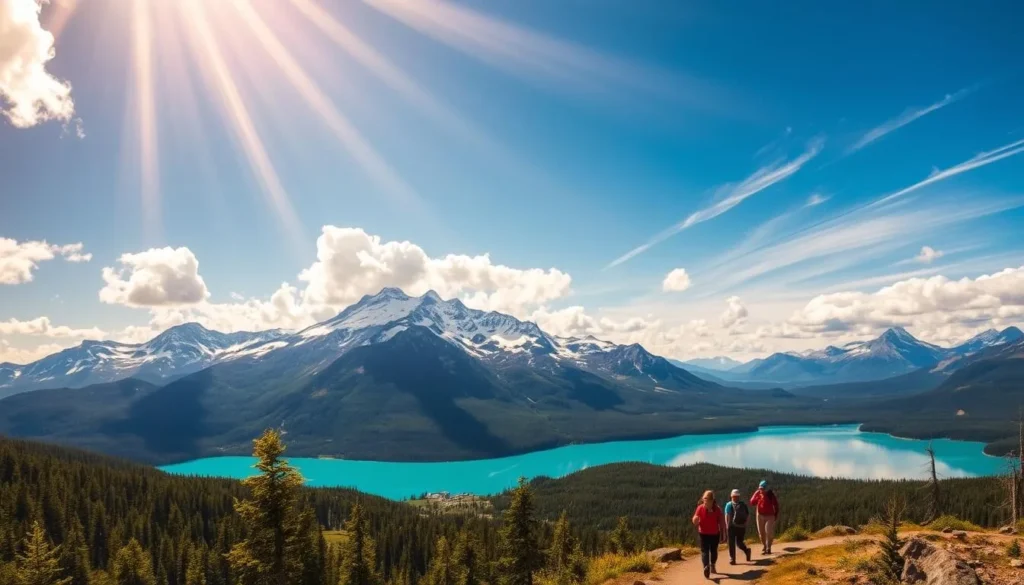
The History Behind the Park
The establishment of Glacier National Park in 1886 was closely tied to the completion of the Canadian Pacific Railway through Rogers Pass. The railway played a significant role in the park’s early development, with the construction of lodges and hotels to accommodate the influx of tourists drawn to the area’s natural beauty.
The park’s rich history is still evident today, with remnants of the railway era, such as abandoned snowsheds and historic tunnels, serving as a reminder of the engineering feats achieved in this challenging terrain. Rogers Pass, a key part of the park, is now recognized as a National Historic Site, honoring its significance in connecting Canada’s east and west.
| Year | Event | Significance |
|---|---|---|
| 1881 | Major A.B. Rogers discovers Rogers Pass | Crucial mountain passage for the Canadian Pacific Railway |
| 1886 | Establishment of Glacier National Park | Protection of the unique mountain ecosystem |
| Present day | Rogers Pass recognized as a National Historic Site | Honoring its role in connecting Canada’s east and west |
Throughout its history, Glacier National Park has balanced preservation with accessibility, creating a unique place where visitors can connect with nature while learning about Canada’s transportation history. As you explore the park, you’ll be walking through living history, with numerous interpretive displays and heritage sites to discover.
When to Visit Glacier National Park, British Columbia
Planning a trip to Glacier National Park in British Columbia requires understanding the best time to visit for an unforgettable experience. The park offers a range of activities and breathtaking scenery throughout the year, but the conditions vary significantly with the seasons.
Best Seasons for Different Activities
The best time to visit Glacier National Park is during the summer months when the park is fully open. July to September are the peak months, with trails mostly clear of snow and the park teeming with wildflowers and wildlife. This period is ideal for hiking, wildlife viewing, and exploring the park’s scenic beauty. If you’re looking for fewer crowds, the shoulder season in spring (April-May) or fall (late September-October) can be a good alternative, though some facilities may be closed or operate on reduced hours.
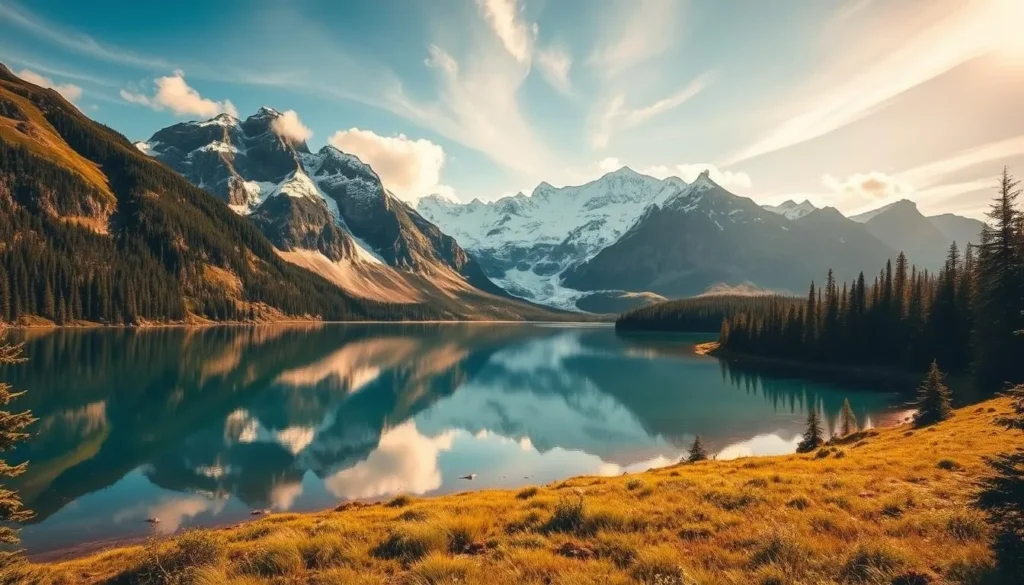
Weather Considerations and Park Access
You should be prepared for rapidly changing mountain weather when visiting Glacier National Park. Conditions can shift quickly, with storms developing in the afternoon, especially during summer. The park receives significant snowfall in winter, with some areas accumulating over 14 meters annually, which means snow can linger on high-elevation trails well into July. Road access is primarily via the Trans-Canada Highway, which remains open year-round but can experience closures during severe winter storms and avalanche control work. It’s essential to check the park’s status before heading out and to be prepared with appropriate gear and maps, as cell phone coverage is limited.
Temperature variations can be significant, with summer days reaching pleasant highs but dropping considerably at night. Spring and fall visits offer unique experiences but come with their own set of challenges, such as limited access and changing weather conditions. Planning your day hikes and activities according to the weather forecast and park conditions will help ensure a safe and enjoyable visit.
Driving the Spectacular Trans-Canada Highway Through Rogers Pass
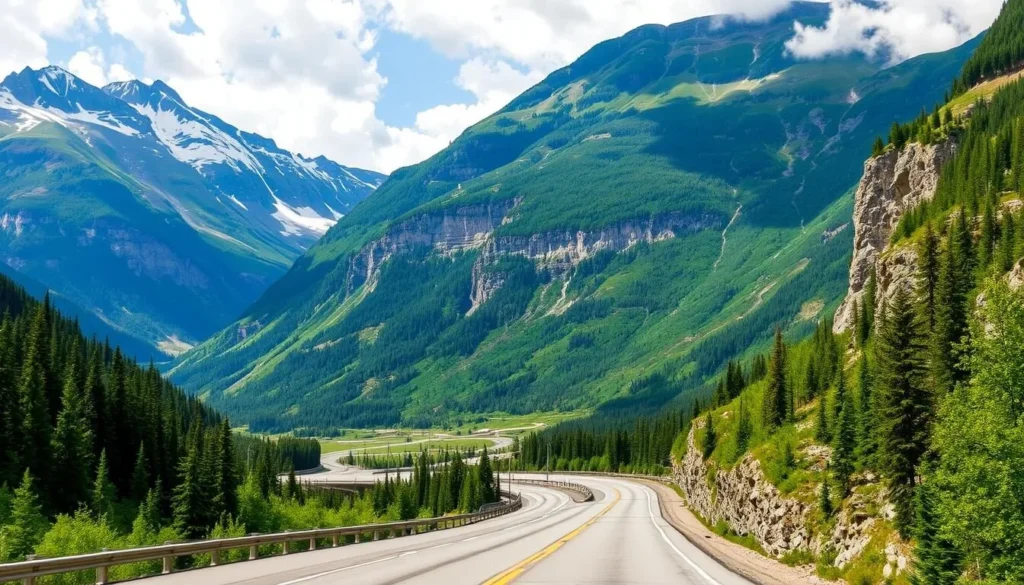
The Trans-Canada Highway winds its way through the breathtaking Rogers Pass, a highlight of Glacier National Park that promises stunning vistas and historical insights. As you drive through this section of Glacier National Park, you’ll be treated to some of the most spectacular scenery in the Canadian Rockies.
Scenic Viewpoints Along the Route
The drive through Rogers Pass is dotted with scenic viewpoints that offer breathtaking views of the surrounding mountains and valleys. You’ll have ample opportunities to stop and take in the beauty of Glacier National Park, with its towering peaks, glaciers, and lush forests. Make sure to stop at the various pull-outs and parking areas to fully appreciate the scenery.
As you explore the park, keep an eye out for the many historical markers and signs that provide insight into the history of the area. The Rogers Pass Discovery Centre is also a great resource for learning more about the park’s history and significance.
Historical Significance of Rogers Pass
Rogers Pass is not just a scenic drive; it’s also a journey through Canadian history. The pass was discovered in 1881 by Major A.B. Rogers and became a crucial link in the transcontinental Canadian Pacific Railway. As you drive through the pass, you’ll notice remnants of the original railway grade, abandoned snowsheds, and other historical features that have earned Rogers Pass its designation as a National Historic Site.
The historical significance of Rogers Pass extends beyond transportation, representing a pivotal moment in Canada’s development as a nation. The pass physically connected eastern and western Canada, helping to fulfill the promise of Confederation. The Rogers Pass Discovery Centre provides excellent exhibits detailing this fascinating history, including artifacts, photographs, and models that bring the story to life.
Rogers Pass Discovery Centre: Your First Stop
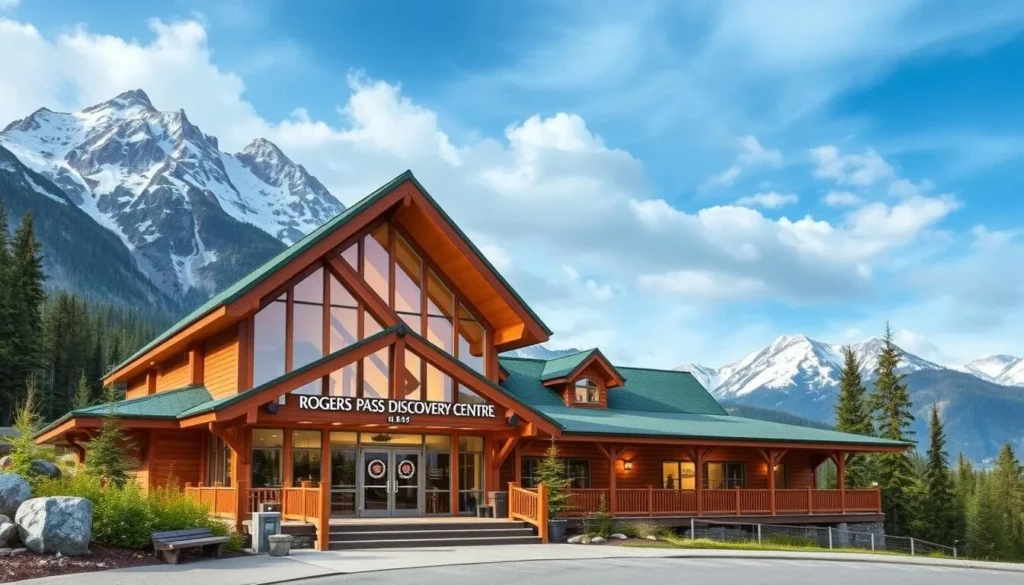
Start your Glacier National Park journey on the right foot by visiting the Rogers Pass Discovery Centre first. Designed to resemble a historic railway snowshed, this visitor centre is the ideal place to gather information about Glacier National Park before you begin your adventure.
Exhibits and Information Available
The Rogers Pass Discovery Centre is open year-round and features interpretive exhibits that highlight the park’s rich history. You’ll find plenty of free brochures and resources to help plan your trip. For those who prefer to plan ahead, the Parks Canada website is also a valuable resource.
The centre provides valuable information about the park’s trails, weather conditions, and necessary safety precautions. This ensures that you’re well-prepared for your visit to Glacier National Park.
Services and Amenities
- Clean restroom facilities are available, making it a convenient first stop after driving through the mountains.
- Potable water stations allow you to refill your water bottles before heading out on trails.
- Helpful staff at the information desk can assist with backcountry permits, which are required for overnight stays.
- A small gift shop offers souvenirs, outdoor supplies, and Glacier National Park merchandise.
- Free Wi-Fi is available, enabling you to download maps or check weather forecasts.
- During winter, the centre provides crucial safety information, including avalanche bulletins and highway condition updates.
- The spacious parking lot accommodates RVs and larger vehicles, with designated areas for winter visitors to register for mandatory avalanche transceivers.
By stopping at the Rogers Pass Discovery Centre, you’ll be well-equipped with the information and resources needed for a safe and enjoyable visit to Glacier National Park, ensuring access to all the park has to offer.
Easy Hiking Trails in Glacier National Park, British Columbia
Easy hiking trails in Glacier National Park, British Columbia, provide an accessible way to experience the park’s natural beauty. The park offers a variety of trails that cater to different ages and abilities, ensuring that everyone can enjoy the stunning scenery.
Meeting of the Waters Trail
The Meeting of the Waters Trail is a scenic hike that takes you through a lush forest to the confluence of two rivers. This trail is approximately 3.5 kilometers round trip and is considered easy. Along the way, you’ll have the opportunity to see the unique geological features of the area and enjoy the serene surroundings.
- The trail is well-marked and maintained, making it easy to follow.
- You can enjoy the scenic views of the surrounding mountains and rivers.
- The trailhead is accessible from the highway, making it a convenient stop.
Bear Creek Falls Trail
The Bear Creek Falls Trail is another easy hiking option in Glacier National Park. This trail leads to a beautiful waterfall, surrounded by lush vegetation. The trail is approximately 3 kilometers round trip and is suitable for families.
- The trail is relatively flat and easy to navigate.
- The waterfall is a picturesque spot for photos and relaxation.
- The surrounding forest is home to a variety of wildlife and plant species.
Hemlock Grove Boardwalk
The Hemlock Grove Boardwalk is a 350-meter loop trail located in the Glacier National Park. It’s a fully wheelchair-accessible trail that takes you through an ancient forest of western hemlock trees, some over 500 years old.
- The elevated boardwalk protects the sensitive forest floor while providing an intimate look at the ecosystem.
- Interpretive signs along the trail explain the unique ecology of the inland temperate rainforest.
- The trail is ideal for a quick visit or as an introduction to the area’s natural features.
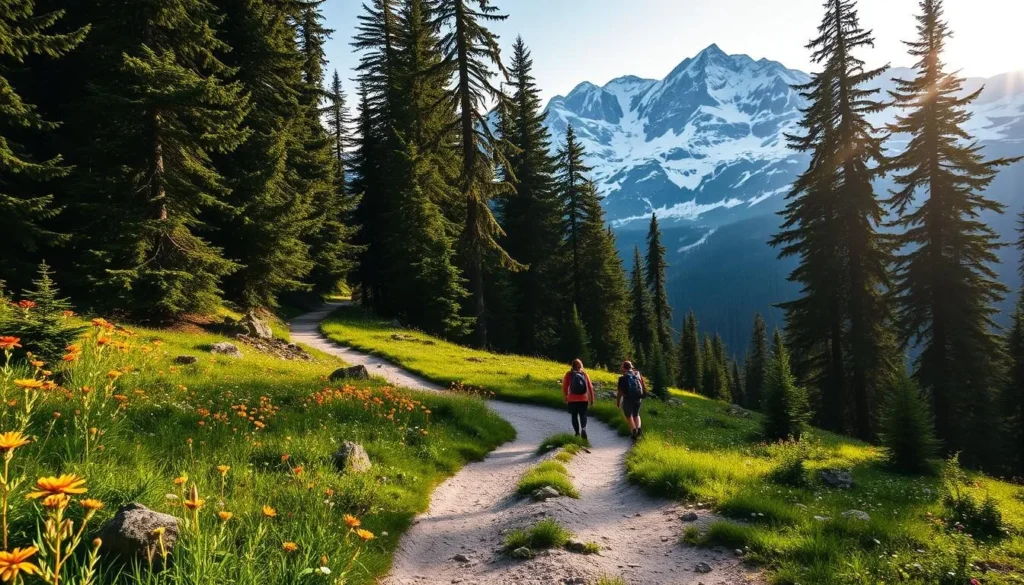
These easy hiking trails in Glacier National Park offer a chance to connect with nature and enjoy the park’s stunning landscapes. Whether you’re looking for a leisurely walk or a short hike, there’s something for everyone.
Moderate to Challenging Day Hikes for Adventure Seekers
If you’re looking for a challenge, Glacier National Park‘s moderate to challenging day hikes are sure to satisfy your adventurous spirit. The park offers a variety of trails that cater to different fitness levels, ensuring that every hiker can find a suitable route.
Asulkan Valley Trail: A Park Favorite
The Asulkan Valley Trail is a favorite among park visitors, offering a challenging hike with spectacular views. This trail takes you through a lush valley surrounded by towering peaks and glaciers. With significant elevation gain, this hike is not for the faint of heart, but the scenery makes it well worth the effort.
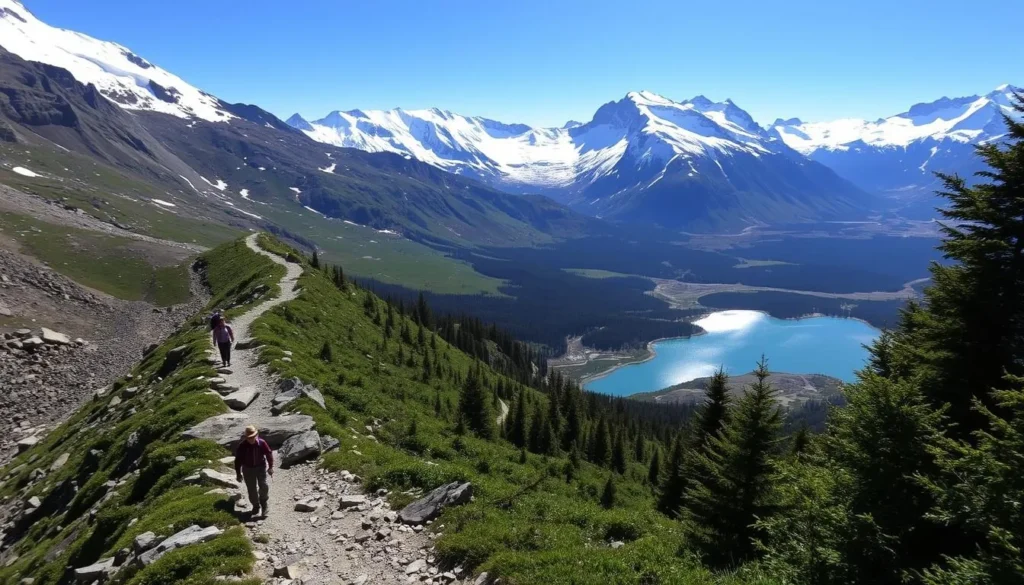
Great Glacier Trail
For those who dare to venture further, the Great Glacier Trail provides an exhilarating experience. This trail is known for its steep incline and rugged terrain, making it a true challenge for even the most seasoned hikers. However, the panoramic views from the top are unparalleled, offering a glimpse into the park’s breathtaking landscapes.
Marion Lake Lookout
The Marion Lake Lookout trail is a 6.4 km return journey that begins at the Illecillewaet Campground. This trail offers a perfect balance for hikers seeking substantial views without extreme elevation gain. With approximately 460 meters of elevation gain, you’ll be rewarded with expansive views of the Illecillewaet Valley and surrounding mountains. The emerald waters of Marion Lake, surrounded by alpine meadows, create a stunning destination. Plan for 3-4 hours to complete this hike at a comfortable pace.
These trails in Glacier National Park offer a mix of challenge and reward, making them ideal for adventure seekers. Whether you’re hiking the Asulkan Valley Trail, Great Glacier Trail, or Marion Lake Lookout, you’re sure to experience the park’s natural beauty.
Glacier National Park, British Columbia: Best Things to Do Beyond Hiking
Beyond its renowned hiking trails, Glacier National Park offers a plethora of activities for visitors to enjoy. The park’s diverse landscapes and ecosystems provide a rich backdrop for a variety of experiences.
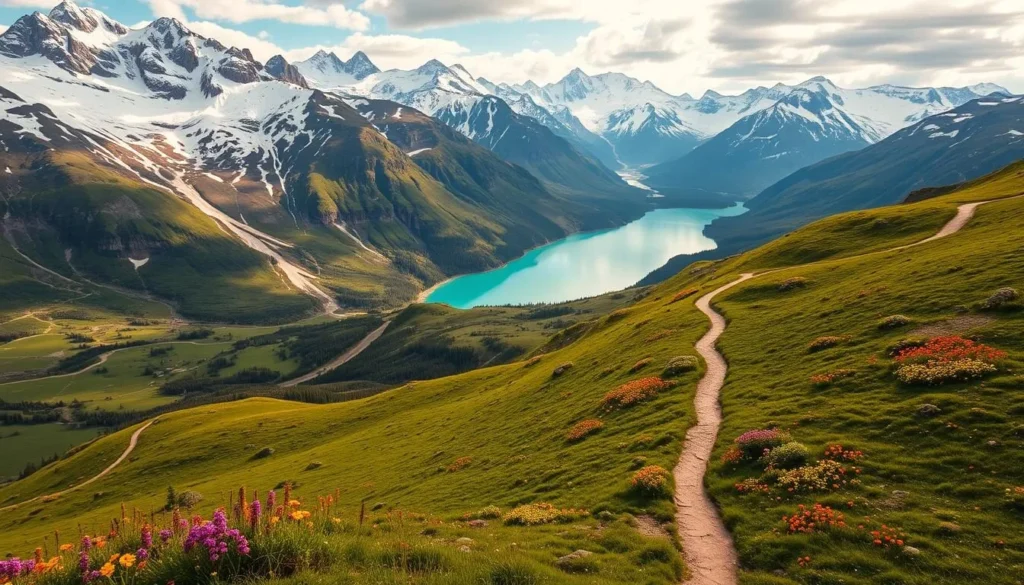
Wildlife Viewing Opportunities
One of the highlights of visiting Glacier National Park is the chance to observe its diverse wildlife in their natural habitats. The park is home to a wide range of species, including mountain goats, grizzly bears, and various bird species. To maximize your wildlife viewing experience, it’s advisable to be out early in the morning or late in the evening when animals are most active. Bringing binoculars can also enhance your viewing experience, allowing you to observe animals from a distance without disturbing them.
- Look out for mountain goats grazing in meadows.
- Grizzly bears can often be spotted in areas with abundant berry bushes.
- Birdwatchers can enjoy spotting various species, including eagles and hawks.
Photography Hotspots
Glacier National Park is a photographer’s paradise, with its stunning mountain landscapes, glaciers, and alpine meadows. The viewpoint at Rogers Pass Summit is a must-visit for its panoramic vistas of the Selkirk Mountains. Early morning light at the Illecillewaet Glacier viewpoint creates magical conditions for capturing the ice and surrounding peaks. The Meeting of the Waters confluence is ideal for long-exposure photography, with clear mountain streams offering perfect subjects.
- The Rogers Pass Summit offers spectacular views.
- Illecillewaet Glacier is perfect for capturing early morning light.
- The Meeting of the Waters is great for long-exposure photography.
Camping Options Within the Park
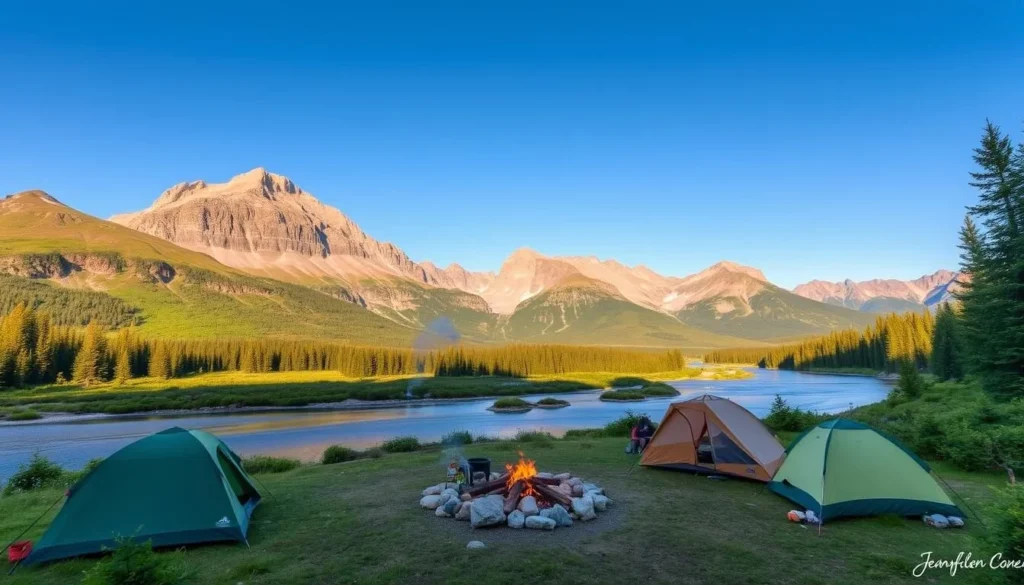
Glacier National Park’s camping facilities cater to a wide range of preferences, from tranquil settings to more rustic experiences. With 13 front country campgrounds featuring 1,012 campsites, you’re sure to find a spot that suits your needs.
Illecillewaet Campground
Illecillewaet Campground is one of the park’s most popular camping options. It operates on a first-come, first-served basis, making it accessible to spontaneous travelers. The campground is surrounded by beautiful scenery and is close to many hiking trails. Campsite fees range from $15 to $23, with $20 being the average. Pets are allowed but must be leashed at all times.
You’ll enjoy the convenience of being near the Rogers Pass Discovery Centre, where you can obtain information on hiking trails and park activities. Ranger programs are available nightly during the summer, enhancing your camping experience with educational and entertaining activities.
Loop Brook and Other Campgrounds
For a more tranquil alternative, consider Loop Brook Campground, with 20 sites set among historic stone pillars. This campground operates on a first-come, first-served basis from late June to early September, with fees around $21.50 per night, including firewood.
Other options include Mount Sir Donald Campground for a remote experience and backcountry campgrounds like Sapphire Col, Asulkan Valley, and Glacier Circle, which require permits. The Alpine Club of Canada maintains backcountry huts, such as the Asulkan Cabin and Wheeler Hut, offering shelter for hikers.
Remember, all camping in Glacier National Park requires proper food storage using bear-proof lockers or canisters to prevent wildlife encounters.
Where to Stay Near Glacier National Park
To make the most of your visit to Glacier National Park, consider staying in nearby towns like Revelstoke or Golden. Both offer a range of accommodations that cater to different preferences and budgets.
Accommodations in Revelstoke
Revelstoke is a charming town with a variety of hotels and lodges. If you’re looking for hotels in Revelstoke near Glacier National Park, you’ll find several options.
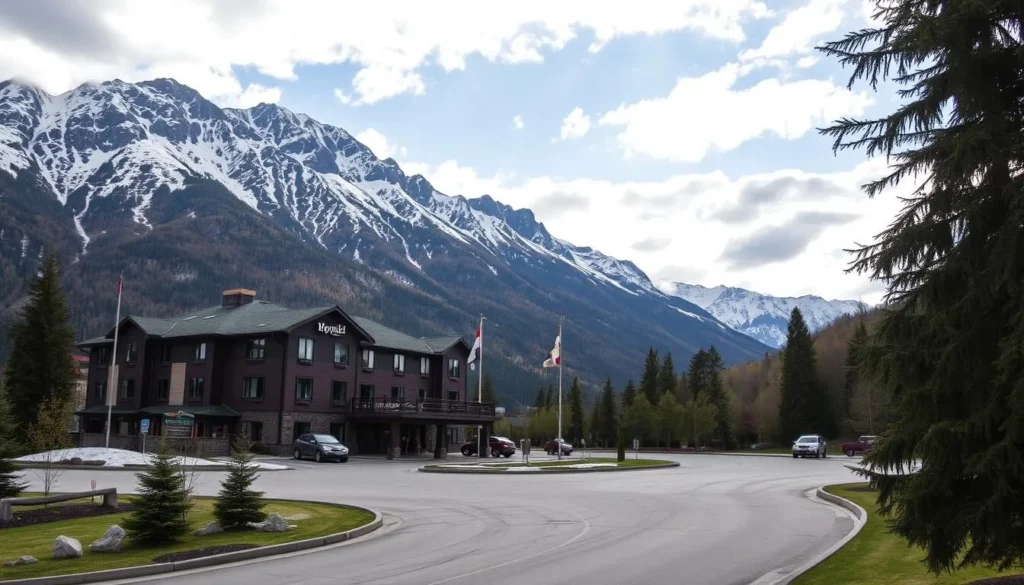
Lodging Options in Golden
Golden, BC, is another excellent choice, located approximately 85 kilometers east of Glacier National Park. It’s an ideal base for exploring the Canadian Rockies, including nearby Yoho National Park.
- Golden Acres Mountain Lodge offers a unique, fairy-tale-like setting with beautifully crafted wooden interiors and modern amenities.
- The Holiday Inn Express Golden-Kicking Horse is a reliable mid-range option with an indoor swimming pool, fitness center, and complimentary breakfast.
- For budget-conscious travelers, the Travelodge by Wyndham Golden Sportsman Lodge provides affordable accommodations with amenities like an indoor pool with a slide, hot tub, and sauna.
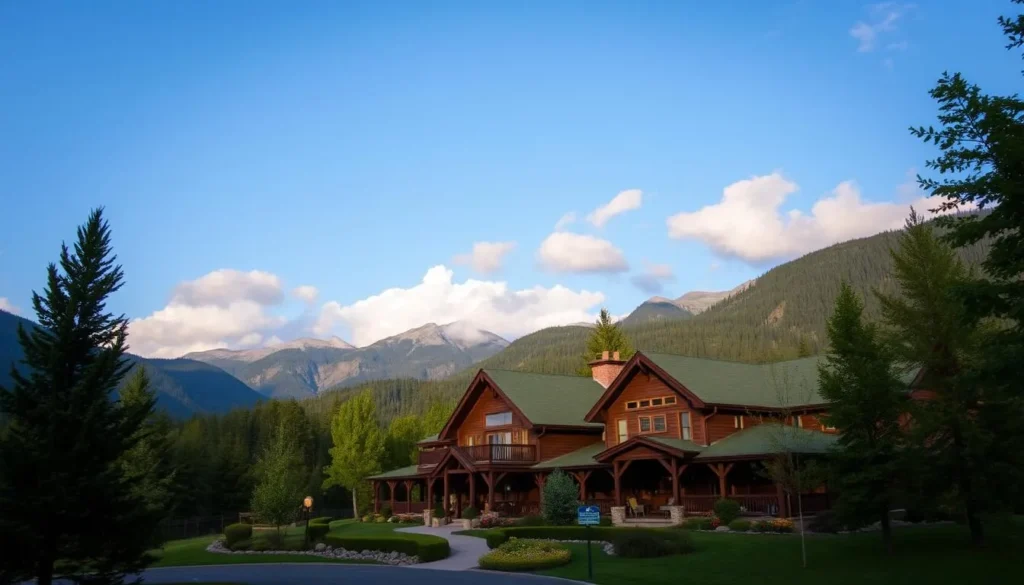
Both Revelstoke and Golden offer convenient access to Glacier National Park and other regional attractions. During the summer, Golden is particularly vibrant, with activities like whitewater rafting, mountain biking, and paragliding available.
Whether you choose Revelstoke or Golden, you’ll be well-placed to enjoy the natural beauty of Glacier National Park and the surrounding Canadian Rockies. Plan your trip and book your stay to make the most of your adventure.
Essential Tips for a Safe and Enjoyable Visit
Before you head into the beautiful landscapes of Glacier National Park, here are some crucial tips to keep in mind. To save on park fees, consider purchasing a Parks Canada Discovery Pass, which grants unlimited access to over 80 destinations for a year, perfect for road trips.
When hiking in Glacier National Park, always carry bear spray and know how to use it. Make noise while hiking to alert wildlife to your presence, especially in areas with limited visibility or near rushing water.
Dress in layers to adapt to the unpredictable weather conditions, and bring at least 3 liters of water per person for day hikes. For added convenience, consider a water filter like a LifeStraw bottle, which allows you to safely drink from streams and lakes.
To ensure a safe and enjoyable trip, tell someone your plans before heading into the backcountry, and check in with park staff at the Rogers Pass Discovery Centre for current trail conditions. Start your hikes early in the day to avoid afternoon thunderstorms and have plenty of daylight to complete your journey.
The above is subject to change.
Check back often to TRAVEL.COM for the latest travel tips and deals.
